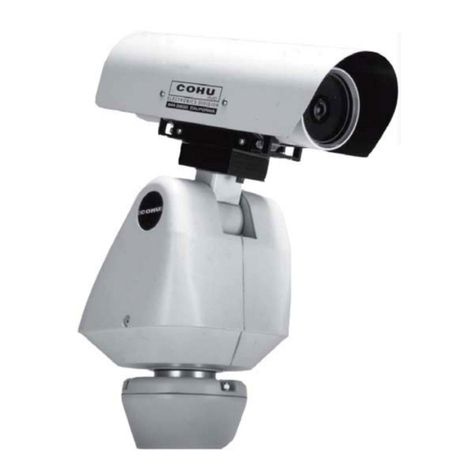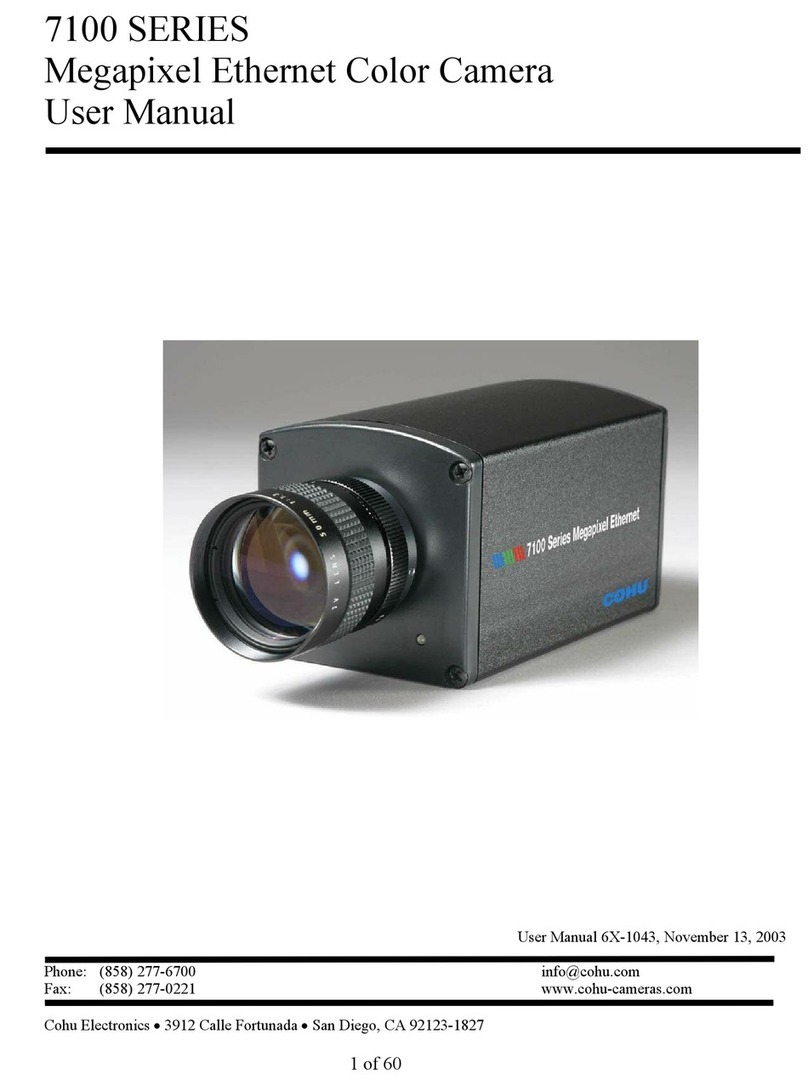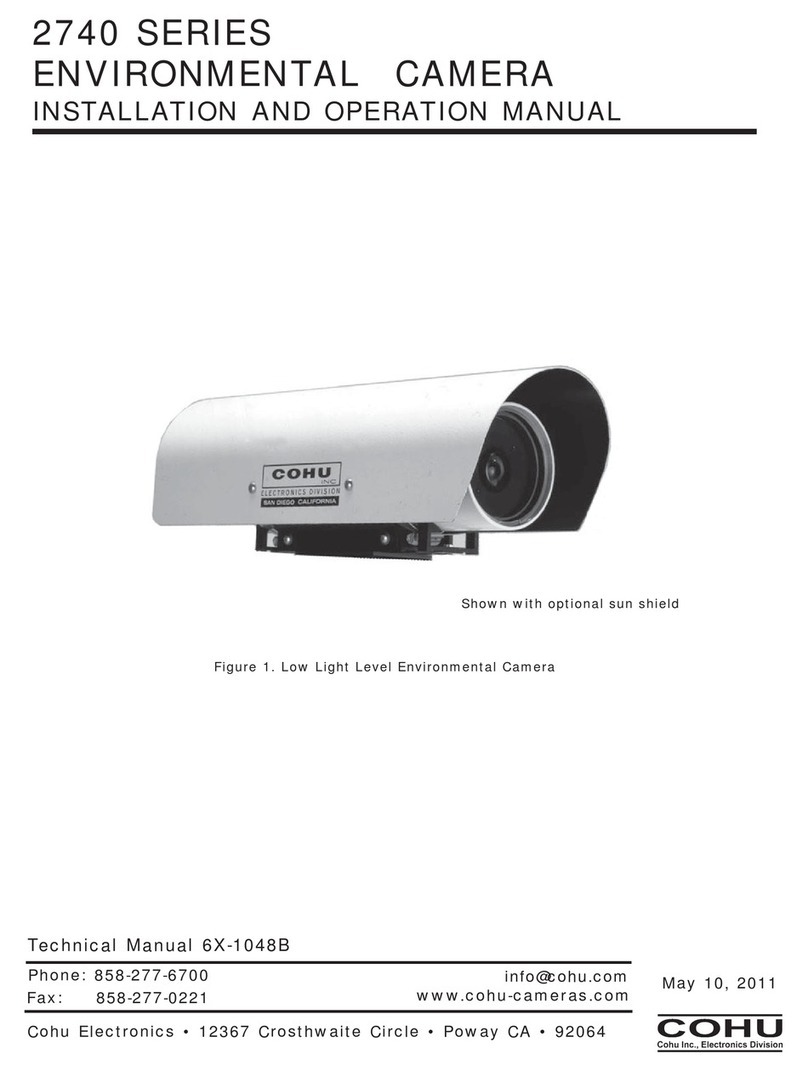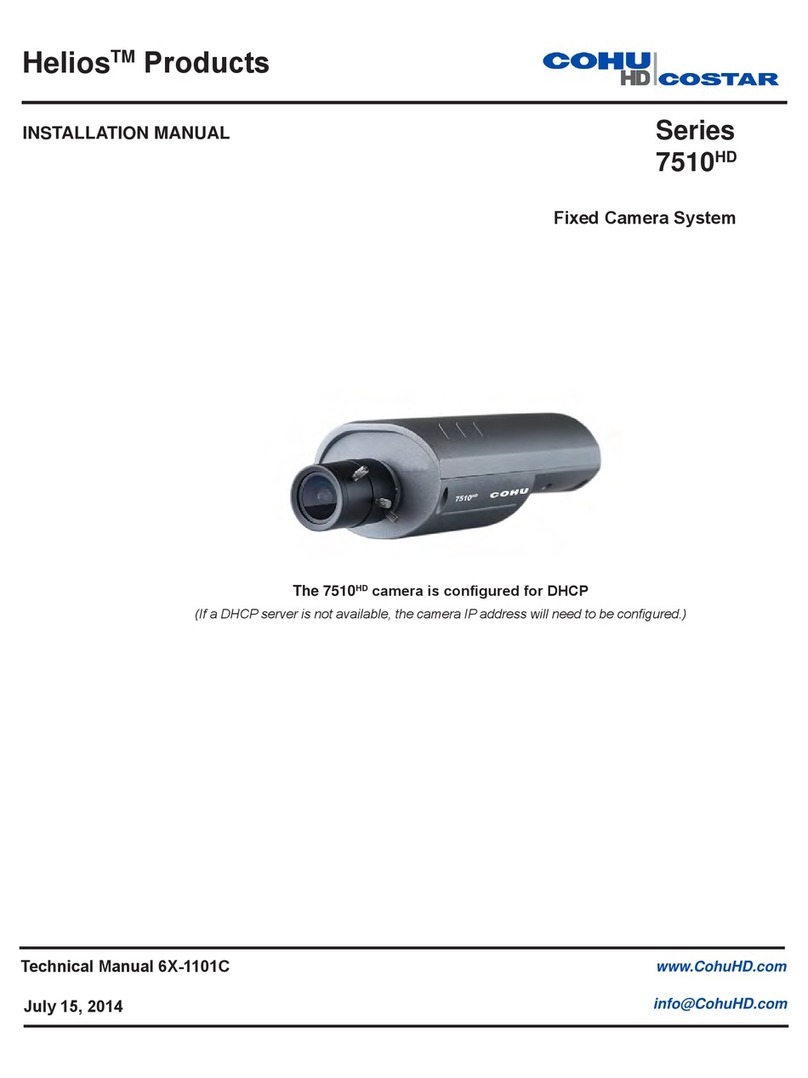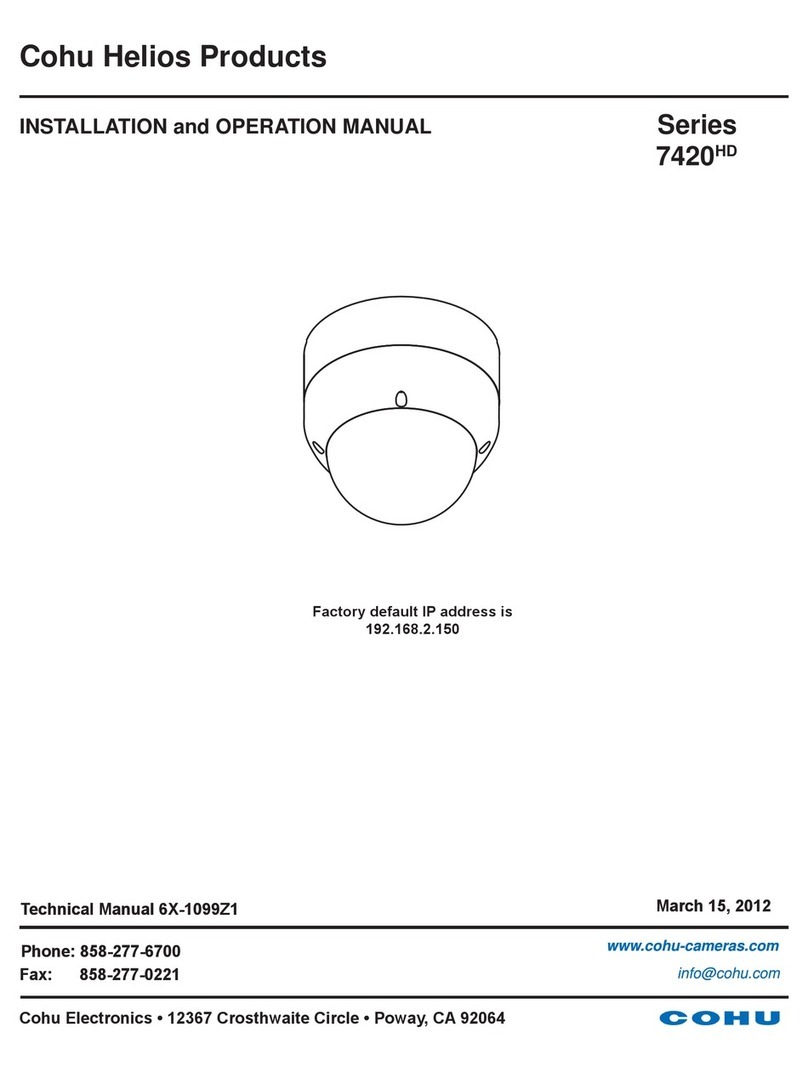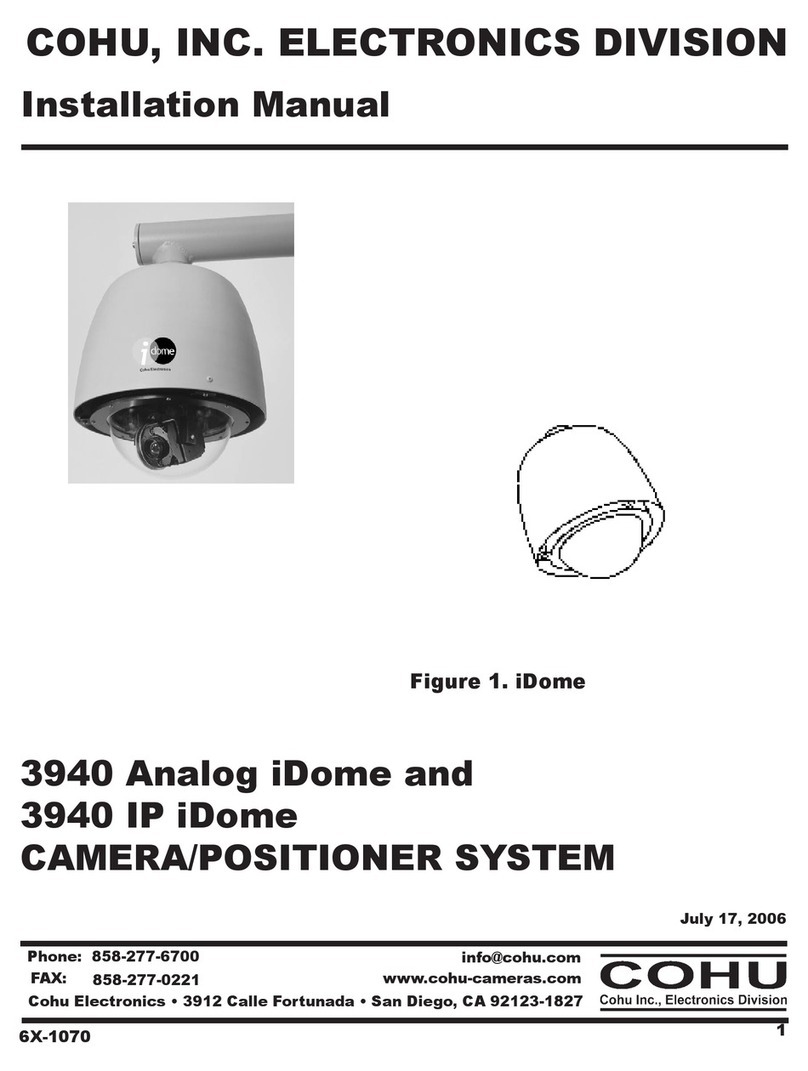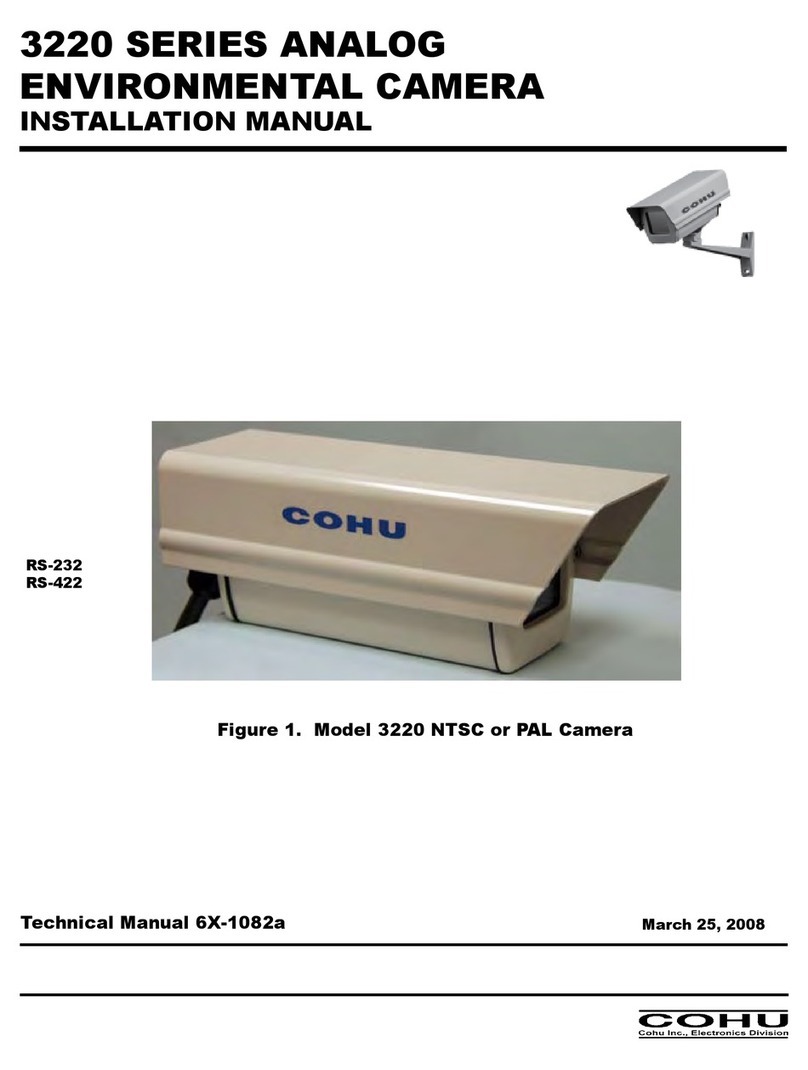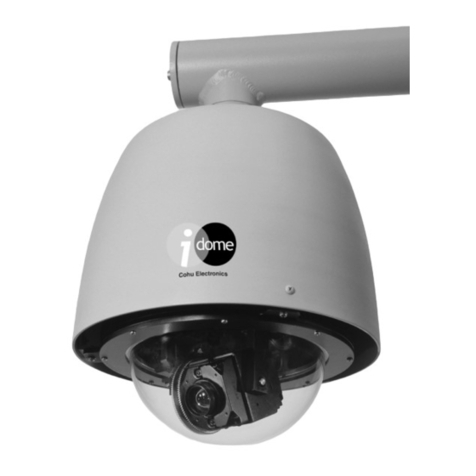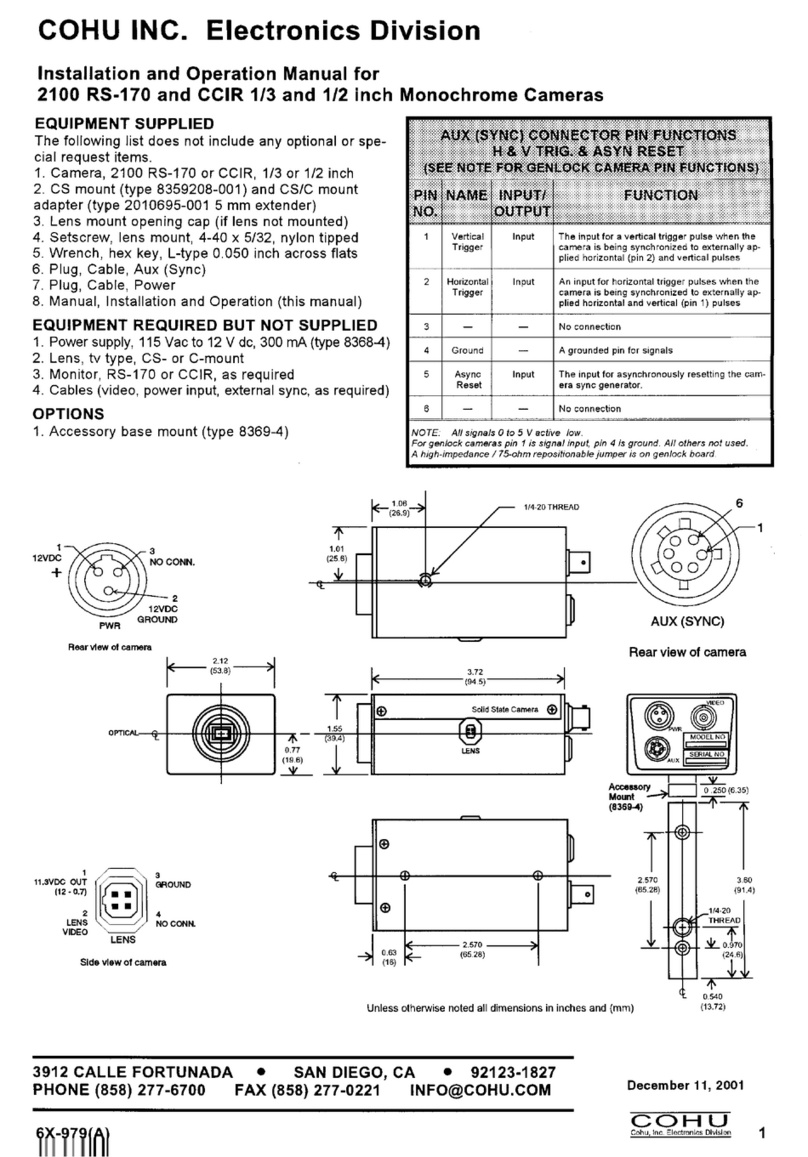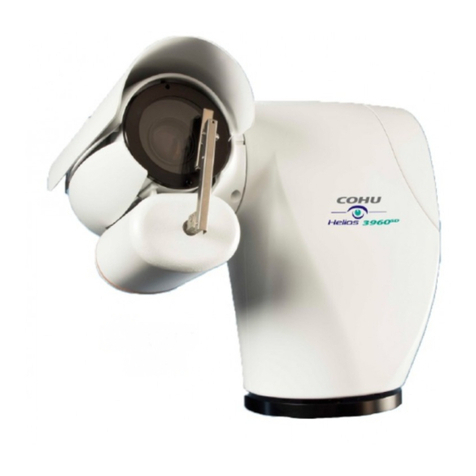
10 6X-1042D
3610 CAMERA TECHNICAL REFERENCE
2.6 Sync Requirements
A standard camera is available in two differ-
ent versions related to sync:
1. Internal Crystal
2. Horizontal drive and vertical drive (12VDC
Camera only)
A camera optioned for either auto iris or dc
iris automatically has the Internal Crystal option.
Only a camera with the manual iris option
can also have the horizontal and vertical drive
option. Likewise a camera having the horizontal
and vertical drive option can only be a manual iris
camera.
H and V drive reverts to the internal crystal if
either of the inputs or both inputs are removed.
As a special order, the camera is also avail-
able with genlock. With genlock, the external sync
reference is applied to a single input on the rear
panel. This input must have both horizontal and
vertical pulses ( composite sync) and they can be
combined with video (composite video). Additional
details about the genlock feature is not covered in
this manual.
2.6.1 H and V Drive Characteristics
These are 75 ohm internally terminated
inputs. It is best to use 75 ohm coax especially
for longer runs. They trigger on negative edges at
standard TTL levels.
2.7 Mounting Requirements
The dimensions shown in gures 5 and 6
illustrate all relevant characteristics related to
mounting the Camera. Note that the CS-mount
adapter is adjustable. The dimension to the front
shoulder of the adapter is a nominal dimension.
Also note that the 1/4-20 threaded holes in the
bottom of the optional mounting adapter block are
meant to accept not more than 0.200-inch depth
from the mounting screws. A screw will bottom
out if an attempt is made to thread it deeper than
0.200 inch.
2.8 CS- and C-mount Adapters
Lenses must be suitable for use with size of
the sensor installed in the Camera (1/4-, 1/3-, or
1/2-inch). The front of the Camera body is tted
with an adjustable CS-mount adapter. It can be
rotated on its threads for back focus distance by
loosening a hex-socket head setscrew. (Figures 5
and 6 illustrate this setscrew at one location, but
since the CS mount rotates, it can appear in any
position.)
If a C-mount lens is to be used with the
Camera a 5 mm extender ring (in the optional
Accessory Kit) must be threaded onto the front of
the CS mount. This ring provide the proper back
focus distance for a C-mount lenses.
2.9 Serial Control Input (RS-232C)
Pins 8 and 9 on the rear panel connector
provide RS-232C serial communications (19,200
baud) for control of internal Camera functions.
The three parts of table 5 lists all 12 pin functions
on the connector for various congurations of the
camera.
2.10 Installation Procedure
Installing the Camera is straightforward. It is
only necessary to mount the Camera to a suitable
base, attach the lens, attach the rear panel con-
nector and apply power. This assumes the other
end of the cable is properly connected to a source
of power, a tv monitor, and any other required
equipment.
Figures 8 is an example cable diagram of a
test cable for use with the 5 V dc version of the
Camera. Only manual iris lenses can be used
with this Camera. The H & V drive leads are re-
quired only for a camera with this option.
Figures 9 and 10 are example wiring dia-
grams illustrating test cables available for use with
the 12 V dc version of the Camera.
Figure 9 is for use with either an auto iris
lens or a dc iris lens — depending on how the
Camera is internally congured.


